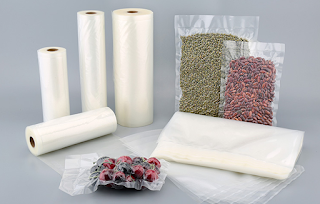Navigating Gluten-Free Emergencies: Essential Tips and Options for Emergency Gluten-Free Food!
Navigating Gluten-Free Emergencies: Essential Tips and Options for Emergency Gluten-Free Food
In times of emergency, such as natural disasters or unexpected situations, maintaining a gluten-free diet can present unique challenges. Whether you're sheltering in place or evacuating, it's crucial to have a plan in place to ensure that you have access to safe and nutritious gluten-free food. Here are some essential tips and options for gluten-free emergency food:
Plan Ahead: Preparation is key when it comes to managing a gluten-free diet during emergencies. Take the time to create an emergency food kit tailored to your dietary needs. Include non-perishable gluten-free items such as canned beans, canned fruits and vegetables, nuts, seeds, gluten-free granola bars, and dried fruit. Make sure to also include a manual can opener, as electricity may not be available during emergencies.
Stock Up on Gluten-Free Staples: Keep your pantry stocked with gluten-free staples that have a long shelf life. Rice, quinoa, gluten-free pasta, and gluten-free flour blends are versatile ingredients that can be used to create a variety of meals. Canned proteins such as tuna, chicken, and beans are also excellent options for gluten-free emergency food.
Consider Freeze-Dried and Dehydrated Options: Freeze-dried and dehydrated foods are lightweight, shelf-stable, and easy to prepare, making them ideal for emergency situations. Many companies offer gluten-free options, including freeze-dried fruits, vegetables, meats, and entrees. These foods retain their nutritional value and flavor, providing you with a convenient and nutritious gluten-free option during emergencies. Read more about these products on Legacy food storage.
Look for Certified Gluten-Free Labels: When purchasing packaged foods for your emergency kit, always look for products that are certified gluten-free. These products have been tested and verified to contain less than 20 parts per million (ppm) of gluten, which is the threshold considered safe for those with gluten sensitivity or celiac disease.
Don't Forget About Snacks and Treats: While it's essential to focus on nutritious staples, don't forget to include gluten-free snacks and treats in your emergency food kit. Having comforting and familiar foods can help alleviate stress during difficult times. Pack items such as gluten-free crackers, popcorn, dried fruit, and chocolate to satisfy cravings and boost morale.
Stay Informed and Flexible: Stay informed about emergency situations in your area and be prepared to adapt your plans accordingly. If you need to evacuate, consider bringing a cooler stocked with perishable gluten-free items such as fresh fruits, vegetables, and dairy alternatives. Additionally, be aware of community resources and emergency shelters that may provide gluten-free meal options.
By taking proactive steps to plan and prepare for emergencies, you can ensure that you have access to safe and nutritious gluten-free food when you need it most. With careful planning and a well-stocked emergency food kit, you can navigate gluten-free emergencies with confidence and peace of mind.
- Get link
- X
- Other Apps


Comments
Post a Comment